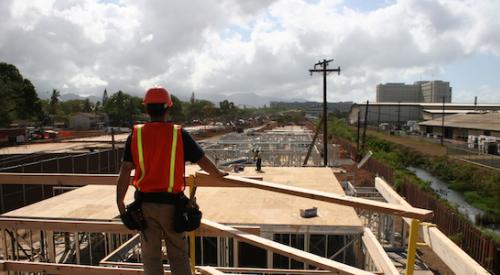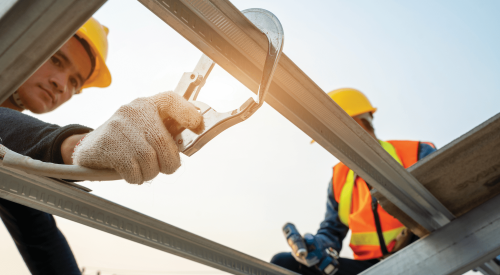Half of Worksites Offer Health/Wellness Programs
Almost half of all U.S. worksites offered some type of health promotion or wellness program in 2017, according to a new study in the American Journal of Health Promotion. Nearly 30% of those job locations offered a program for physical activity and fitness. The findings of the report show that worksite health promotion continues to grow in America, according to a news release from the Center for Disease Control and Prevention.
Health strategies include health-promoting policies, health benefits design, and physical changes to the work environment. Some 19% of worksites offered a program to help employees stop using tobacco products, and about 17% offered a program to address obesity or weight management.
“More than 156 million full-time workers in the U.S. spend most of their daily waking hours in the workplace, providing employers with an important opportunity to foster a healthy and safe work environment,” said CDC Director Robert R. Redfield, M.D. “It is encouraging to see a growing number of worksites developing and promoting a culture of health for employees.”
For more information on CDC’s Workplace Health Promotion activities, visit https://www.cdc.gov/
Associated Builders and Contractors Invest $1.6 billion in Workforce Development Annually
Associated Builders and Contractors members invested $1.6 billion to educate their employees in 2018, up from $1.1 billion in 2013. The 45% increase in spending resulted in nearly twice as many course attendees—more than 980,000—receiving craft, leadership, and safety education training in commercial and industrial construction, according to an ABC news release. “With more than 90% of members reporting a worker shortage and construction spending at near-record highs, this is the time to invest in our people, expand career opportunities and secure the workforce of the future,” said Greg Sizemore, ABC’s vice president of health, safety, education and workforce development.
ABC member contractors invested an average of $117,679, or 8.3% of payroll, on workforce development and education in 2018. Safety education accounted for the greatest share of spending at 48%, or $1,306 per employee. ABC members provided safety education to nearly 600,000 course attendees in 2018.
ABC estimates that 8.2 million people were employed by the U.S. construction industry last year, and an additional 500,000 people will need to be hired in 2019 to meet the current backlog of construction projects—which stood at to 8.8 months in February 2019, according to ABC’s Construction Backlog Indicator.
Greater Use of Heat Pumps Will Help U.S. Reduce Greenhouse Gas Emissions
New studies from states, electric utilities, and environmental groups suggest that as more of the country’s electricity is generated from solar and wind power, electric heat pumps can help reduce greenhouse gas emissions to near zero by 2050. A new study by a California research firm describes heat pumps for home heating and cooling as “the low hanging fruit when it comes to saving customers money and reducing greenhouse gas emissions.”
Such a dramatic change would come largely at the expense of the natural gas industry, which provides most of the fuel for home heating and cooling. Another study found that there are economic and environmental benefits to using heat pumps in California, the Northeast, and the Southeast, where many homeowners still rely on more expensive electric resistance heating. A senior scientist for the Natural Resources Defense Council says that electric heat pumps still face market hurdles. Upfront costs for equipment and installation can be higher than those for natural gas-fueled alternatives, and many customers and contractors have a low awareness about the benefits of heat pumps.
ASHRAE 90.2-2018 Raises the Bar on Energy Efficiency for New Homes
ASHRAE 90.2-2018, published by ASHRAE late last year, has raised the bar on how much energy can be saved in new homes. ASHRAE 90.2-2018 standard for homes and apartments of three stories and fewer is not required by federal law. But jurisdictions that want to comply with the Paris Agreement on climate change can use this standard to that end.
Likewise, homebuilders and developers that want to set a high specification for what they will build, finance, or rent, can benefit by conforming to the standard. ASHRAE 90.2-2018 offers a different approach than previous standards by ASHRAE and by other national and global organizations. It does not specify prescribed energy-saving features but rather establishes a performance target and gives builders and designers the flexibility to meet the standard however they choose.
Colorado Looks to Upgrade Energy, Water Standards
A bill in the Colorado legislature will require local jurisdictions to use one of the three most recent versions of the IECC as a minimum code. Another bill considers updating energy and water efficiency standards for some products.
Colorado is a home rule state, so the code bill would allow jurisdictions to retain some freedom regarding their energy codes but it would require them to use one of the model energy codes developed and published within the last decade.
The other bill would set up-to-date energy and water efficiency standards for 15 commercial and residential products not already regulated by the federal government. The standards are based on state, federal Energy Star, and WaterSense specifications, and industry standards in most cases.













